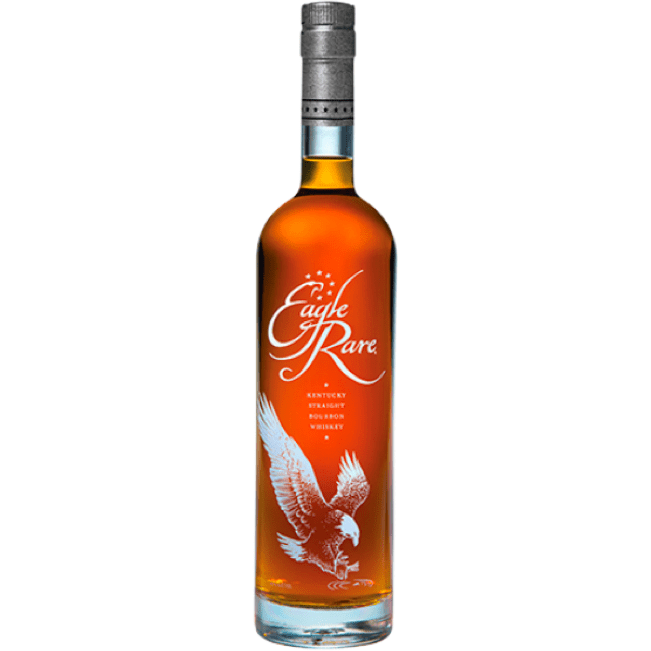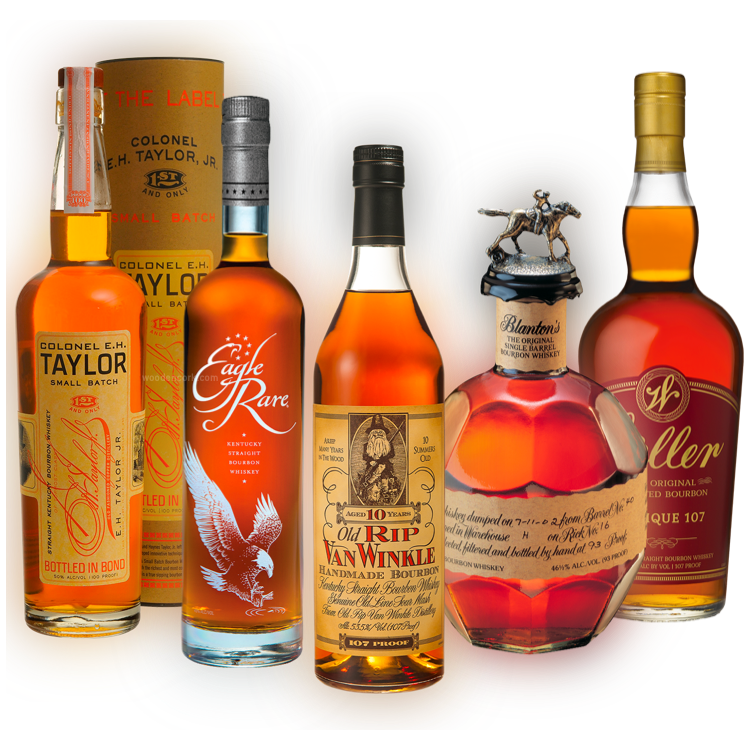The 2016 Spirits Growth Brands Awards: Top-Sellers and Market Trends
This year’s wine and spirit Growth Brands Awards winners sold nearly 130 million 9-liter cases in 2015, averaging almost 1 million cases per winner. The Beverage Information & Insights Group used the following criteria to select this year’s Growth Brands winners, based on brands’ projected case sales for the 2015 calendar year:
Fast Track Brands have exceeded 100,000 nine-liter cases, with double-digit growth in each of the last four years. All Fast Track Brands are at least five years old.
Rising Star Brands are less than five years old and have exhibited growth during each year of their existence, reaching at least 20,000 nine-liter cases sold in 2015.
Established Growth Brands are top sellers in their category, moving a minimum of 400,000 nine-liter cases annually. They have also grown in sales over each of the past four years.
Comeback Brands are previous winners that have rebounded in sales to at least their previous winning level, following a recent decline.
 Spirited Growth
Spirited Growth
The spirits industry is showing consistent growth, but the shake-up surrounding consumer preferences continues at the category level. Vodka (particularly flavored vodka) is leveling off after more than a decade of expansion, while whiskey and tequila are vying to take its place long-term as the fastest-growing spirit.
This year’s list of Growth Brands winners includes 54 spirits in four categories: Fast Track Brands, Rising Stars, Established Growth Brands and Comeback Brands. Topping the list are tequila and liqueurs (which includes flavored whiskeys) with 10 representatives each. Close behind are American Whiskey and vodka, with nine each.
Industry-wide research from the Beverage Information & Insights Group (BIIG) shows how much current industry trends impacted the winners list.
“American whiskey and imported whiskies were both up more than 4 percent in 2015, as was the tequila category,” Velez says. “Those categories are well-represented in the list of winners. Consumers continue to be drawn to Bourbon, and that trend is expanding to other brown spirits.”
As the last of the Millennial generation reaches legal drinking age, 21- to 34-year-old consumers’ preferences are having an increasing impact on beverage alcohol sales.
“Younger consumers are embracing new expressions, particularly with flavored whiskey,” Velez adds. “The success of Fireball has led to the introduction of honey, cinnamon and other flavors in brown spirits, which are doing well both on- and off-premise.”
We can expect the current trends to continue in the near-term, with gin and rum continuing to lose market share to brown spirits, and flavors shifting from confectionary vodkas to sweet and spicy whiskeys.
“I think flavored whiskeys will continue to rise and flavored vodkas will continue to fall,” Velez says. “Tequila could be the next breakout category as whiskey drinkers continue to experiment. One thing we’ve learned about Millennials is that they’re not brand- or category-loyal, so everyone is waiting to see where they turn next.”
What impact will these spirit category trends have on wine and beer? Velez says 2015 was a transitional year for beverage alcohol, as brands are learning to adapt to changing habits.
“What’s interesting is that today’s consumer not only has a different approach to the spirits, wine and beer categories, but also to the entire beverage alcohol market,” she says. “Consumers are no longer tied to one certain category as they approach their consumption type or occasion.”
The biggest trend, though, which is sure to impact all categories in the coming year, is premiumization.
“What stands out the most in the beverage alcohol industry is that it’s going through a renaissance with regards to product quality,” Velez says. “Certain consumers are drinking less, but they’re drinking better, which bodes well from a revenue perspective.”
Bourbon Barrels Ahead
A number of American Whiskeys are Fast Track winners this year, demonstrating staying power and consistent double-digit growth. Sazerac’s Buffalo Trace engaged in Bourbon education and tastings, social media engagement and distillery tourism throughout 2015. “The quality and variety within the category continue to interest new and curious Bourbon drinkers,” says Senior Marketing Director Kris Comstock.
Brown-Forman’s super-premium Bourbon, Woodford Reserve, has continually introduced new expressions created at the brand’s Versailles, Kentucky distillery. In 2015 Woodford Reserve Rye hit the U.S. market, and later in the year the company released its Distillery Series, available in select Kentucky markets.
“Super premium American whiskey has enjoyed a renaissance around the world,” says Global Brand Director Mark Bacon. “Consumers are looking for brands that provide great taste, authenticity and experiences. From visiting the distillery to meeting Master Distiller Chris Morris or Master Taster Elizabeth O’Neill, Woodford Reserve connects with consumers.”
Diageo’s Bulleit is also capitalizing on the global whiskey trend by introducing whiskeys to international markets. Bulleit has launched in more than 40 new markets in the past two years, which Senior Brand Manager Dan Levine calls “an incredible accomplishment that we’re proud to share with our global trade and distributor partners.”
The brand is also expanding in the U.S. with plans for a new distillery. “The Bulleit Distilling Co. is under construction in Shelbyville, Kentucky,” Levine says. “The new $115 million distillery will be an environmentally friendly and efficient facility worthy of the Bulleit name. We’ve already started aging some Bourbon there and look forward to what’s ahead.”
Trendy Tequilas
The tequila category experienced a number of ownership and distribution changes in recent years, including Rising Star winner Casamigos forming its own importing company and ending its relationship with Sidney Frank Importing. Since then, the brand has continued to grow in sales and consumer awareness.
“We don’t pay attention to industry trends,” says co-founder Rande Gerber. “We hear from our customers that many people are drinking Casamigos who never drank tequila before. It’s about our quality and taste, which makes Casamigos the fastest-growing tequila in the world.”
In 2015, Beam Suntory’s Sauza tequila launched a rebrand, including new packaging and a redesigned label with a prominent depiction of the brand’s iconic Gallo, originally personally chosen by founder Don Cenobio. The Established Growth winner also launched its first flavored tequila, Sauza Cucumber Chili, as a response for consumers demanding expanded flavor profiles in the tequila category.
“In recent years, we’ve also seen consumers demonstrate a heightened awareness of 100% agave tequilas,” says Senior Director of Tequilas Claire Richards. “Sauza is poised to continue to outperform the space with our premium line.” In combination with the rebrand, Sauza Blue also took on the new name, Sauza Signature Blue, featuring a new premium cork closure.
Campari America’s Espolón Tequila, a fast track winner in 2016, is known for its creative promotions and packaging and was a passion project of creator and Master Distiller Cirilo Oropeza. The brand’s Black Market, is a secretive program involving a van trekking through select cities and stopping at select bars for spontaneous sampling. In addition, the brand launched Espolón Añejo tequila, finished in Wild Turkey Bourbon barrels, in late 2014.
“The main purpose of all Epsolón’s promotions is to educate people about tequila,” says Category Marketing Director for tequila and rum, Christine Moll. “Today’s consumers are more discerning than ever when it comes to their tequila choices. They want to explore the category and discover gems that offer exceptional liquid at an accessible price point. We want to further their education and inspire their curiosity.”
Diageo completed its acquisition of Tequila Don Julio in February of 2015, following a deal struck with Casa Cuervo involving Bushmills. A Fast Track winner, Don Julio built on the success of its Airstream Speakeasy tour from 2014, rolling out a fleet of vintage pickup trucks from the 1940s era like those founder Don Julio Gonzalez traveled in to and from his agave fields.
“Consumers are increasingly more interested in the ingredients and history behind their drinks, and the brand’s growth can be attributed to a heightened awareness and appreciation for the versatility and complexity of tequila,” the Don Julio brand team recently told us. “This is causing consumers and mixologists to seek out and use tequila in a variety of ways.”
The post The 2016 Spirits Growth Brands Awards: Top-Sellers and Market Trends first appeared on Beverage Dynamics.





